Sabine Müller
Explainable Quantum Machine Learning
Jan 22, 2023Abstract:Methods of artificial intelligence (AI) and especially machine learning (ML) have been growing ever more complex, and at the same time have more and more impact on people's lives. This leads to explainable AI (XAI) manifesting itself as an important research field that helps humans to better comprehend ML systems. In parallel, quantum machine learning (QML) is emerging with the ongoing improvement of quantum computing hardware combined with its increasing availability via cloud services. QML enables quantum-enhanced ML in which quantum mechanics is exploited to facilitate ML tasks, typically in form of quantum-classical hybrid algorithms that combine quantum and classical resources. Quantum gates constitute the building blocks of gate-based quantum hardware and form circuits that can be used for quantum computations. For QML applications, quantum circuits are typically parameterized and their parameters are optimized classically such that a suitably defined objective function is minimized. Inspired by XAI, we raise the question of explainability of such circuits by quantifying the importance of (groups of) gates for specific goals. To this end, we transfer and adapt the well-established concept of Shapley values to the quantum realm. The resulting attributions can be interpreted as explanations for why a specific circuit works well for a given task, improving the understanding of how to construct parameterized (or variational) quantum circuits, and fostering their human interpretability in general. An experimental evaluation on simulators and two superconducting quantum hardware devices demonstrates the benefits of the proposed framework for classification, generative modeling, transpilation, and optimization. Furthermore, our results shed some light on the role of specific gates in popular QML approaches.
Quantum Feature Selection
Mar 24, 2022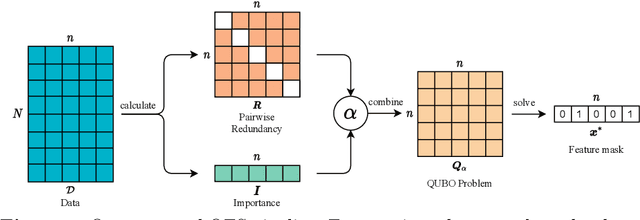


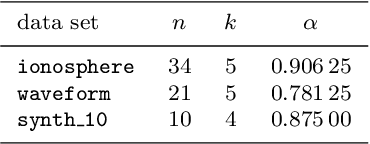
Abstract:In machine learning, fewer features reduce model complexity. Carefully assessing the influence of each input feature on the model quality is therefore a crucial preprocessing step. We propose a novel feature selection algorithm based on a quadratic unconstrained binary optimization (QUBO) problem, which allows to select a specified number of features based on their importance and redundancy. In contrast to iterative or greedy methods, our direct approach yields higherquality solutions. QUBO problems are particularly interesting because they can be solved on quantum hardware. To evaluate our proposed algorithm, we conduct a series of numerical experiments using a classical computer, a quantum gate computer and a quantum annealer. Our evaluation compares our method to a range of standard methods on various benchmark datasets. We observe competitive performance.
Scalable Hyperparameter Optimization with Lazy Gaussian Processes
Jan 16, 2020

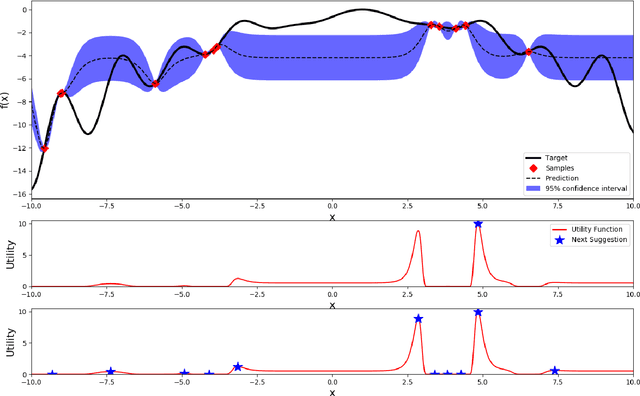
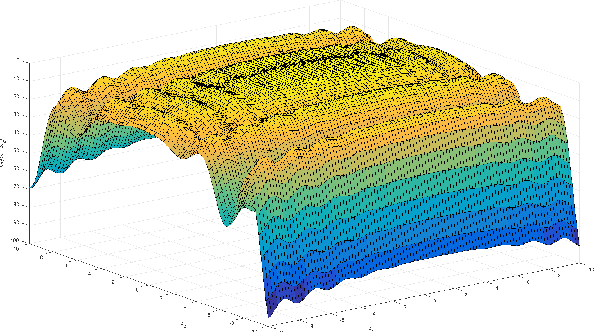
Abstract:Most machine learning methods require careful selection of hyper-parameters in order to train a high performing model with good generalization abilities. Hence, several automatic selection algorithms have been introduced to overcome tedious manual (try and error) tuning of these parameters. Due to its very high sample efficiency, Bayesian Optimization over a Gaussian Processes modeling of the parameter space has become the method of choice. Unfortunately, this approach suffers from a cubic compute complexity due to underlying Cholesky factorization, which makes it very hard to be scaled beyond a small number of sampling steps. In this paper, we present a novel, highly accurate approximation of the underlying Gaussian Process. Reducing its computational complexity from cubic to quadratic allows an efficient strong scaling of Bayesian Optimization while outperforming the previous approach regarding optimization accuracy. The first experiments show speedups of a factor of 162 in single node and further speed up by a factor of 5 in a parallel environment.
Robustness of Brain Tumor Segmentation
Dec 26, 2019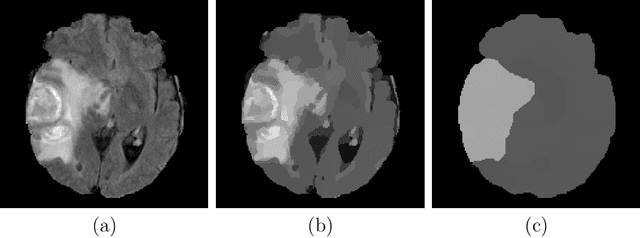
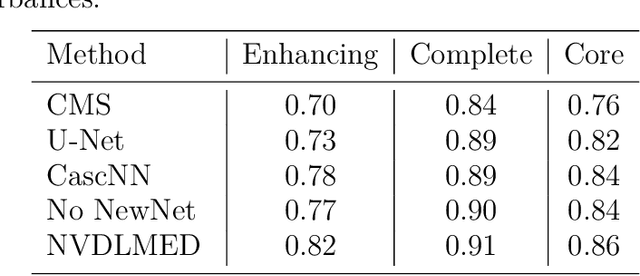
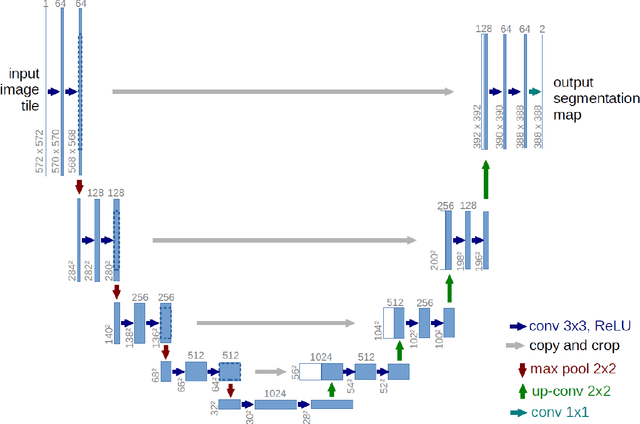
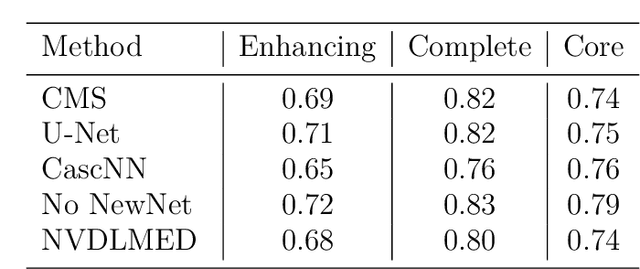
Abstract:We address the generalization behavior of deep neural networks in the context of brain tumor segmentation. While current topologies show an increasingly complex structure, the overall benchmark performance does improve negligibly. In our experiments, we demonstrate that a well trained U-Net shows the best generalization behavior and is sufficient to solve this segmentation problem. We illustrate why extensions of this model cannot only be pointless but even harmful in a realistic scenario. Also, we suggest two simple modifications (that do not alter the topology) to further improve its generalization performance.
Object Segmentation Tracking from Generic Video Cues
Oct 05, 2019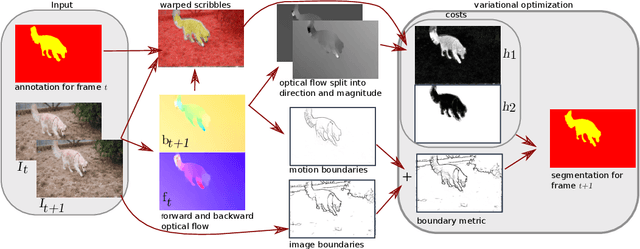
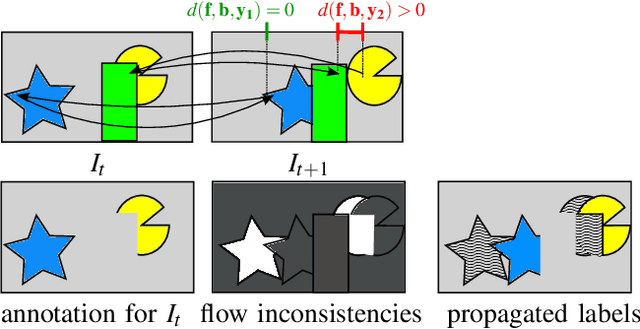
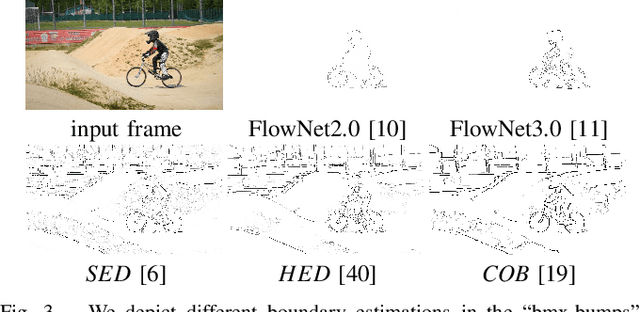

Abstract:We propose a light-weight variational framework for online tracking of object segmentations in videos based on optical flow and image boundaries. While high-end computer vision methods on this task rely on sequence specific training of dedicated CNN architectures, we show the potential of a variational model, based on generic video information from motion and color. Such cues are usually required for tasks such as robot navigation or grasp estimation. We leverage them directly for video object segmentation and thus provide accurate segmentations at potentially very low extra cost. Furthermore, we show that our approach can be combined with state-of-the-art CNN-based segmentations in order to improve over their respective results. We evaluate our method on the datasets DAVIS16,17 and SegTrack v2.
Prediction of Search Targets From Fixations in Open-World Settings
Apr 11, 2015



Abstract:Previous work on predicting the target of visual search from human fixations only considered closed-world settings in which training labels are available and predictions are performed for a known set of potential targets. In this work we go beyond the state of the art by studying search target prediction in an open-world setting in which we no longer assume that we have fixation data to train for the search targets. We present a dataset containing fixation data of 18 users searching for natural images from three image categories within synthesised image collages of about 80 images. In a closed-world baseline experiment we show that we can predict the correct target image out of a candidate set of five images. We then present a new problem formulation for search target prediction in the open-world setting that is based on learning compatibilities between fixations and potential targets.
 Add to Chrome
Add to Chrome Add to Firefox
Add to Firefox Add to Edge
Add to Edge